The NBA draft is an annual event where NBA teams select eligible players to join their organization. Dating back to 1947, the draft consists of two rounds, with each of the 30 teams having at least one pick. Historically, most players drafted are college basketball players.
1947: First NBA Draft
In 1947, the National Basketball Association (NBA) held its first draft. This annual event allows NBA teams to draft eligible players who have declared for the draft to join their organization.
1950: Collegiate Players Dominate NBA Draft
Collegiate players dominated the NBA draft for decades since its inception in 1950.
1956: Territorial Pick in NBA Draft
From 1956, teams could use a territorial pick in which they forfeited their first-round selection in order to choose a player from their immediate area.
1960: NBA Draft Length in 1960
In 1960, the NBA draft went as long as 21 rounds, as teams would select players until they ran out of prospects.
1961: 1961
1961
1965: End of Territorial Pick
Through 1965, teams could use a territorial pick in which they forfeited their first-round selection in order to choose a player from their immediate area.
1966: 1966
1966
1966: Elimination of Territorial Picks
In 1966, territorial picks were eliminated, replaced by a coin flip for the rights to first overall pick, the 1966 draft is considered the first modern NBA draft.
1967: 1967
1967
1968: 1968
1968
1968: NBA Draft Length in 1968
In 1968, the NBA draft went as long as 21 rounds, as teams would select players until they ran out of prospects.
1970: 1970
1970
1971: NBA Draft Coin Flip Change
Starting in 1971, the worst team in each conference flipped a coin to see who will receive the first pick in that year's upcoming draft.
1974: 1974
1974
1974: NBA Draft Stabilizes at 10 Rounds
By 1974, the NBA draft had stabilized to 10 rounds.
1975: Darryl Dawkins enters NBA Draft
In 1975, Darryl Dawkins entered the NBA draft. After Darryl Dawkins, not many high school players went directly to the NBA draft for almost 20 years because of the exposure of the college games.
1977: NBA Draft Reduced to Eight Rounds
In 1977, the NBA draft was shortened to eight rounds following the addition of four former ABA teams joining the NBA via the ABA-NBA merger.
1978: Mychal Thompson Drafted First Overall
In 1978, Bahamian Mychal Thompson became the first foreign player to be chosen first overall in the NBA draft. However, Thompson had spent much of his childhood in Florida and played college basketball at Minnesota.
1980: 1980
1980
1980: NBA draft televised
The NBA draft has been televised since 1980, the same year the NFL and NHL televised (or publicized) theirs.
1983: Manute Bol Drafted
In 1983, Manute Bol out of the Sudan was drafted in the 5th round by the San Diego Clippers. Bol's selection was later deemed ineligible by the NBA.
1984: Hakeem Olajuwon Drafted First Overall
In 1984, Nigerian Hakeem Olajuwon was drafted first overall. He would later gain U.S. citizenship.
1984: Noted NBA draft year
In 1984, the NBA draft was a noted year.
1984: USA Network broadcast of NBA draft
Until 1984, USA Network broadcast the NBA draft as part of its contract with the NBA.
1985: Manute Bol Drafted Again
In 1985, Manute Bol was drafted again by the NBA this time out of Division II University of Bridgeport as the 31st pick overall in the second round.
1985: NBA Draft Shortened to Seven Rounds
In 1985, the NBA draft was shortened to seven rounds.
1985: Introduction of NBA Draft Lottery
In 1985, the NBA introduced the lottery process. The league was attempting to counter accusations that certain teams were purposefully losing in order to gain a chance to participate in the annual coin flip.
1985: TBS broadcast of NBA draft
Starting in 1985, TBS broadcasted the NBA draft as part of its NBA on TBS package.
1986: Notable NBA draft
The 1986 NBA draft was notable for the number of solid or outstanding players selected in later rounds, partly because of drug problems that claimed the life of second overall pick Len Bias and affected the careers of several other first-round picks.
1988: 1988
1988
1989: 1989
1989
1989: NBA Draft Limited to Two Rounds
By agreement with the National Basketball Players Association, the NBA drafts from 1989 onward have been limited to two rounds, which gives undrafted players the chance to try out for any team.
1990: TNT takes over the NBA draft
From 1990 to 2002, TNT took over the NBA draft as more NBA properties moved to the network (the NBA on TNT).
1995: 1995
1995
1995: High School Standouts Drafted
From 1995, NBA teams drafted a slew of just-graduated high school standouts.
1996: Noted NBA draft year
In 1996, the NBA draft was a noted year.
1997: International Players Drafted
In the 1997 NBA draft, 11 international players were selected in the two rounds. Tim Duncan who is from the United States Virgin Islands was picked number 1 overall.
1998: Michael Olowokandi Drafted First Overall
In the 1998 NBA draft, Nigerian Michael Olowokandi was picked first overall after playing college basketball at Pacific.
2000: NBA 1st Overall Picks since 2000
Since 2000, the NBA has had 1st Overall Picks.
2000: Worst NBA draft in history
The 2000 NBA draft has been regarded as the worst in NBA history, with Sports Illustrated calling its first round "a horrible group of players".
2002: Yao Ming Drafted First Overall
In 2002, Yao Ming became the first foreign player without U.S. college experience to be selected number 1 overall in the NBA draft. The 2002 draft produced 17 international players, with only three of them having U.S. college experience.
2002: International Players Picked First Overall
In the 2002 NBA draft, international players were picked first overall.
2003: Impact of Yao Ming on NBA in China
In 2003, it was written that Yao Ming has single-handedly transformed his countrymen from nameless, faceless millions into mighty men who can jam with the very best. Ratings for NBA games broadcast on Chinese TV have never been higher as the nation keeps track of Yao's Houston Rockets.
2003: Noted NBA draft year
In 2003, the NBA draft was noted for bringing several future superstars into the league, such as LeBron James, Dwyane Wade, Carmelo Anthony and Chris Bosh.
2003: ESPN began broadcasting the draft
Starting in 2003, ESPN began broadcasting the NBA draft (starting in 2003) with the NBA on ESPN, which it continues to do today.
2004: 2004
2004
July 2005: NBA Implements Age Requirement
In July 2005, the NBA implemented an age requirement that high school seniors were no longer eligible for the NBA draft in 2006 and thereafter.
2005: Andrew Bogut Picked First Overall
In 2005, the Milwaukee Bucks picked Andrew Bogut, from Australia by way of the University of Utah, No. 1 in the NBA draft.
2005: NBA Implements Age Limit
In 2005, the NBA implemented an age limit, preventing high school seniors from being eligible for the NBA draft starting in 2006. Any players who are not an "international player" must be at least one year out of the graduation of his high school class in order for them to qualify for the upcoming draft.
2006: NBA Age Requirement
In 2006, the NBA age requirement was implemented. This meant that high school seniors were no longer eligible for the NBA draft.
2006: Andrea Bargnani Drafted First Overall
In 2006, the Toronto Raptors drafted Andrea Bargnani from Italy, making him the second foreign player without U.S. college experience and the first European to be selected number 1 overall.
2006: High School Players Not Eligible for NBA Draft
Starting with the 2006 draft, high school players were no longer eligible to enter the NBA draft directly after graduating. The new eligibility rules required players to be at least one year removed from high school graduation and 19 years old by the end of the calendar year of the draft.
2008: NBA TV coverage of the draft
Since 2008, NBA TV has also produced its own coverage of the NBA draft since coming under the purview of Turner Sports.
2009: College Underclassmen Draft Rules
From 2009, college underclassmen had until the day before the April signing period to withdraw their name from the draft and retain NCAA eligibility.
2011: Kyrie Irving Selected First Overall
In 2011, Australian born Kyrie Irving was selected by the Cleveland Cavaliers after having played one year at Duke.
2013: Anthony Bennett Drafted First Overall
In 2013, the Cleveland Cavaliers selected Anthony Bennett, who played at UNLV, first overall and making Bennett the first Canadian to be drafted at No. 1.
2013: Underwhelming NBA draft
The 2013 NBA draft has also been called underwhelming, although Victor Oladipo and Rudy Gobert eventually became All-Stars, and Giannis Antetokounmpo later became a two time NBA MVP.
2013: International Prospects as No. 1 Selections
The NBA drafts from 2013 held international prospects as No. 1 selections in their respective drafts.
2014: Andrew Wiggins Drafted First Overall
In the 2014 NBA draft, the Cleveland Cavaliers selected Canadian shooting guard/small forward Andrew Wiggins as the No. 1 pick.
2015: Karl-Anthony Towns Drafted First Overall
During the 2015 NBA draft, the Minnesota Timberwolves selected U.S.-born center Karl-Anthony Towns, also born with Dominican Republic citizenship by way of his mother, as the first player from the latter country to become the No. 1 selection.
2015: Satnam Singh Bhamara Drafted
In 2015, Indian prospect Satnam Singh Bhamara was drafted in the second round after being at least one year removed from his high school graduation.
2015: College Underclassmen Draft Rules
Through 2015, college underclassmen had until the day before the April signing period to withdraw their name from the draft and retain NCAA eligibility.
2016: Ben Simmons Drafted First Overall
During the 2016 NBA draft, the Philadelphia 76ers selected Australian forward Ben Simmons to be the No. 1 selection.
2016: Thon Maker Drafted
In 2016, South Sudanese–Australian prospect Thon Maker was drafted in the first round after being at least one year removed from his high school graduation.
2016: Thon Maker Eligible for NBA Draft
In 2016, Thon Maker was eligible for the NBA draft despite not attending college, as he had completed a postgraduate year, technically making him one year removed from high school graduation.
2016: Changes to NBA Draft Combine and NCAA Eligibility
Since 2016, players could enter the draft and participate in the NBA draft combine multiple times and retain NCAA eligibility by withdrawing from the draft within 10 days after the end of the mid-May NBA draft combine.
2016: International Prospects as No. 1 Selections
The NBA drafts to 2016 held international prospects as No. 1 selections in their respective drafts.
2017: End of International Prospects as No. 1 Selections
In 2017, the run of international prospects as No. 1 selections in their respective drafts ended.
2018: Deandre Ayton Drafted First Overall
In the 2018 NBA draft, the Phoenix Suns selected Bahamian center Deandre Ayton as their first ever No. 1 selection.
2018: Changes to NBA Draft Lottery System
Until 2018, in the NBA draft lottery system, the first three draft picks were determined using ping-pong ball machine with 14 balls numbered 1–14 and the worst team received 250 combinations, the second worst getting 199, and the third worst team 156.
2018: NBA Draft Lottery Change
Until 2018, the NBA draft lottery covered the first three picks, after which it was increased to the first four.
2019: Changes to NBA Draft Lottery System
Starting in 2019, in the NBA draft lottery system, the three worst teams receive 140 combinations each, the fourth worst 125.
2021: NBA draft televised on ABC
In 2021, the NBA draft was also televised on broadcast television for the first time on ABC.
2023: Victor Wembanyama Drafted First Overall
In the 2023 NBA draft, the San Antonio Spurs selected Frenchman Victor Wembanyama with the No. 1 selection, making him the first French player to be drafted at No.1.
2024: Zaccharie Risacher Drafted First Overall
In the 2024 NBA draft, the Atlanta Hawks selected Frenchman Zaccharie Risacher with the No. 1 selection.
Mentioned in this timeline
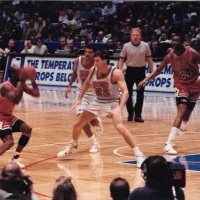
Basketball is a team sport played on a rectangular court...
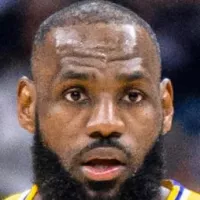
LeBron James nicknamed King James is a professional basketball player...
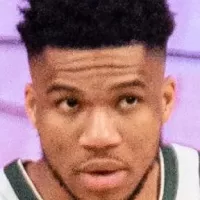
Giannis Antetokounmpo nicknamed the Greek Freak is a Greek and...
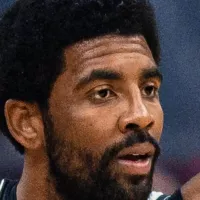
Kyrie Irving is an American professional basketball player currently playing...
Nigeria is a West African nation the most populous in...
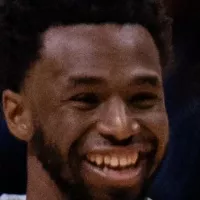
Andrew Wiggins is a Canadian professional basketball player currently playing...
Trending
Jaden McDaniels is an American professional basketball player currently playing for the Minnesota Timberwolves in the NBA He played college...

9 months ago Dire Wolf's potential return clashes with Trump's endangered species policy; de-extinction questioned.

28 days ago Trump Pardons Gobble and Waddle: A Thanksgiving Tradition Continues with Presidential Humor.

1 month ago Peyton Watson's Opportunity: Millions on Nuggets Roster and Denver Breakout Potential.
7 months ago HBO's 'Mountainhead' skewers tech elite in a satisfying end-of-world satire.
1 month ago HBO Max Offers Huge Black Friday Discount: One Year for Just $36!
Popular

Ben Shapiro is a prominent American conservative political commentator media...

XXXTentacion born Jahseh Dwayne Ricardo Onfroy was a controversial yet...

Candace Owens is an American conservative political commentator and author...

William Franklin Graham III commonly known as Franklin Graham is...
The Kennedy Center Honors are annual awards recognizing individuals and...

Tucker Carlson is an American conservative political commentator known for...